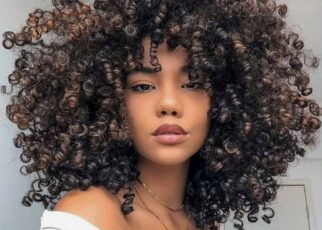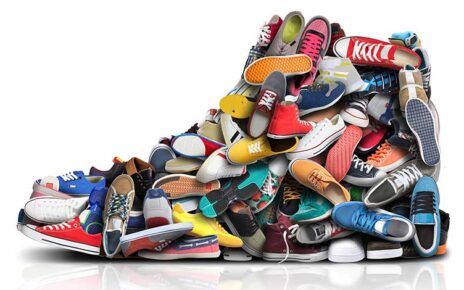3C Hair – If you have been tending to your curls uniquely or are new to the world of natural hair, recognizing your hair type is crucial for enhancing your hair care journey. Understanding your hair type will provide insights into its porosity and density, enabling you to determine the most suitable care routine for your curls.
Curly hair is categorized as type 3 in the hair typing system, consisting of subtypes 3A, 3B, and 3C. It’s important to remember that each subtype within type 3 is distinct. Type 3 hair encompasses various curl patterns, with 3C hair characterized by tightly coiled corkscrew curls.
Keep reading to learn more about 3C hair, how to take care of 3c hair, and so much more.
What Is 3C Hair Type?
Type 3 hair displays a distinct range of curls, varying from loose curls to springy corkscrews. One distinguishing characteristic of type 3C is its specific curl pattern. Chamberlain explains that 3C hair is characterized by tight coils with volume, with numerous strands densely packed together, resulting in a textured appearance.
Another method of identifying this curl type is through its spring factor, which refers to the extent to which the curl stretches when pulled. If your hair stretches three to six inches, it is likely to be type 3 hair.
Type 3C curly hair exhibits well-defined curls with a tight, S-shaped pattern. 3C curly hair type is dense, often blending curly and coiled strands within the hair pattern. Combining curls and coils contributes to the thickness and texture of type 3C hair. Additionally, due to its delicate nature, 3C hair is prone to frizz, as noted by Sultan.
3C Hair Type vs. Other Types of Hair
According to Chamberlain, 3C hair stands out within the type 3 category for having the tightest curl pattern, often forming corkscrews. Chamberlain describes 3C hair as feeling slippery due to its loose and large curls and retains its S-shape even when stretched out. Williams adds that 3C hair differs from type 4 hair because its curls are slightly larger and more defined.
One significant distinction between 3C and 4A hair lies in their density. Chamberlain explains that 4A curls are characterized by springy, S-patterned coils with a circumference similar to that of a crochet needle. While both 3C and 4A type hair resemble S-shape curls, 4B strands exhibit sharp angles that resemble the letter Z. 4B curls are more prone to frizz, making it challenging to maintain protective styles. Chamberlain notes that protective styles like braid-outs and twist-outs tend not to last long for 4B hair types, and gels and curling lotions are often used to enhance the curl pattern and provide a stronger hold.
Similar to type 3C, 4C hair is delicate and prone to dryness. Chamberlain highlights that all hair types produce some natural oils; however, particular ones struggle to distribute these oils along the hair shaft. 4C hair, in particular, experiences significant shrinkage, with approximately 75 per cent higher shrink than any other hair type. Unlike 3C hair, the zig-zag pattern on 4C hair may not be readily discernible due to its tight shrinkage.
Both 3C and 4C hair types are susceptible to dryness, but with 4C hair, it is crucial to be mindful of the products used. Chamberlain advises against excessive amounts of heavy oils and butter to moisturize 4C hair, which can quickly become overloaded with products.
How To Take Care of 3C Hair Type?
Caring for 3C hair requires a consistent and gentle routine that addresses its unique characteristics. Here are detailed steps to help you take care of your 3C hair type:
- Cleansing:
- Use a sulfate-free shampoo formulated especially for curly hair. Sulfates can strip natural oils and dry out the hair.
- Focus on massaging the scalp to remove dirt and buildup while letting the shampoo cleanse the hair strands as it rinses out.
- To maintain moisture balance, consider occasionally co-washing (using a conditioner instead of shampoo).
- Conditioning:
- Apply a moisturizing conditioner to your hair after shampooing. Look for products that are designed for curly or dry hair.
- Use your fingers or a wide-toothed comb to gently detangle, starting from the ends and working to the roots.
- Leave the conditioner in for a few minutes before rinsing thoroughly with cool water to seal the cuticles and enhance shine.
- Deep Conditioning:
- Incorporate a deep conditioning treatment into your routine at least once weekly to provide intense hydration and nourishment.
- Apply the deep conditioner to damp hair and distribute it evenly from roots to ends.
- Use a plastic cap or wrap your hair in a warm towel to create heat, which helps the conditioner penetrate deeply.
- Leave the treatment on for the recommended time and rinse thoroughly.
- Moisturizing:
- After washing, apply a leave-in conditioner or a moisturizing cream to damp hair to lock in moisture.
- Use a wide-toothed comb or your fingers to distribute the product evenly, ensuring every strand is coated.
- Consider using a water-based leave-in conditioner for lightweight hydration or a thicker cream for extra moisture.
- Styling:
- Apply a styling product, such as a curl-enhancing gel, mousse, or cream, to define and hold your curls.
- Work the product through your hair, scrunching upward to encourage curl formation.
- Allow your hair to air dry or use a diffuser on a low heat setting to prevent excessive frizz and maintain curl definition.
- Protecting:
- Minimize heat styling and use heat-protectant products when necessary.
- Sleep on a satin or silk pillowcase or wrap your hair in a satin bonnet or scarf to reduce friction and retain moisture.
- Consider protective styles like braids, twists, or updos to protect your hair from daily manipulation and external elements.
- Maintenance:
- Refresh your curls between wash days by spritzing with a water-based leave-in conditioner or mixing water and aloe vera juice.
- Detangle gently with your fingers or a wide-toothed comb, starting from the ends and working your way up.
- Trim split ends regularly to maintain healthy hair growth.
Remember, each person’s hair is unique, so adjust these steps based on your hair’s specific needs and preferences. Regularly assess the condition of your hair and make necessary adjustments to your routine as you become more familiar with your 3C hair type.
FAQs:
How often should you wash my 3C hair?
The frequency of washing 3C hair depends on factors such as your scalp’s oil production and your hair’s porosity. Generally, it is recommended to wash 3C hair once or twice a week to maintain moisture balance. However, you can adjust the frequency based on your hair’s needs. Some may find that washing more or less frequently works better for their hair.
How to combat frizz in my 3C hair?
Frizz is a common concern for 3C hair. To fight frizz, focus on keeping your hair moisturized. Use hydrating products, such as leave-in conditioners or creams, to lock in moisture. Avoid towel-drying your hair vigorously, as it can roughen the cuticles and contribute to frizz. With the help of a microfiber towel, gently squeeze out excess water; you can even use an old t-shirt. Additionally, consider using anti-frizz serums or oils to smooth down the hair shaft and tame flyaways.
What hairstyles work well for 3C hair?
3C hair offers versatility when it comes to styling. Some popular hairstyles that work well for 3C hair include twist-outs, braid-outs, Bantu knots, wash-and-go’s, and protective styles like braids or updos. Experiment with different techniques and styles to find what suits you best.
Use proper techniques, products, and tools, such as wide-toothed combs or your fingers, to minimize breakage and preserve curl definition. Additionally, remember to protect your hair at night by sleeping on a satin or silk pillowcase or wearing a satin bonnet or scarf to maintain your hairstyle and prevent frizz.





